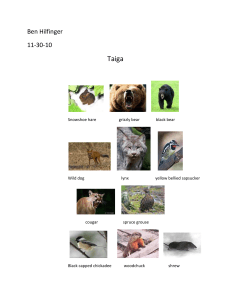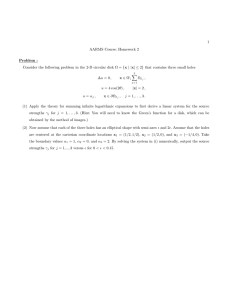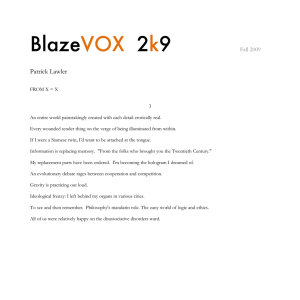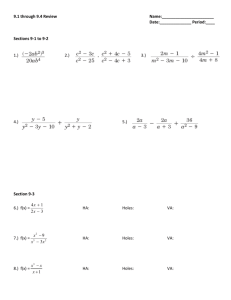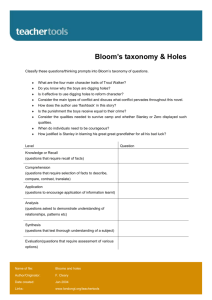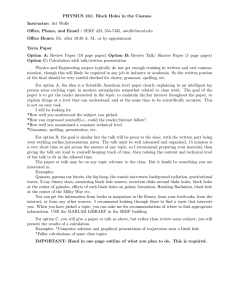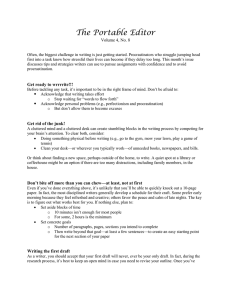Recognizing Sapsucker Damage to Your Trees
advertisement
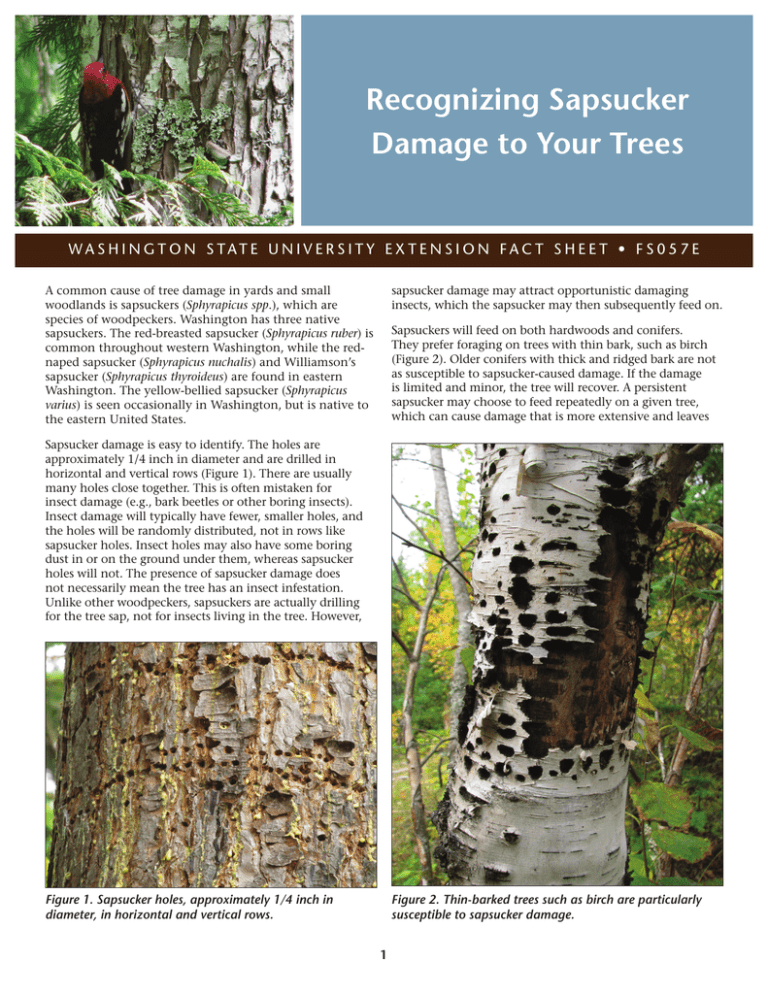
Recognizing Sapsucker Damage to Your Trees WA S H I N G T O N S TAT E U N I V E R S I T Y E X T E N S I O N FA C T S H E E T • F S 0 5 7 E A common cause of tree damage in yards and small woodlands is sapsuckers (Sphyrapicus spp.), which are species of woodpeckers. Washington has three native sapsuckers. The red-breasted sapsucker (Sphyrapicus ruber) is common throughout western Washington, while the rednaped sapsucker (Sphyrapicus nuchalis) and Williamson’s sapsucker (Sphyrapicus thyroideus) are found in eastern Washington. The yellow-bellied sapsucker (Sphyrapicus varius) is seen occasionally in Washington, but is native to the eastern United States. sapsucker damage may attract opportunistic damaging insects, which the sapsucker may then subsequently feed on. Sapsuckers will feed on both hardwoods and conifers. They prefer foraging on trees with thin bark, such as birch (Figure 2). Older conifers with thick and ridged bark are not as susceptible to sapsucker-caused damage. If the damage is limited and minor, the tree will recover. A persistent sapsucker may choose to feed repeatedly on a given tree, which can cause damage that is more extensive and leaves Sapsucker damage is easy to identify. The holes are approximately 1/4 inch in diameter and are drilled in horizontal and vertical rows (Figure 1). There are usually many holes close together. This is often mistaken for insect damage (e.g., bark beetles or other boring insects). Insect damage will typically have fewer, smaller holes, and the holes will be randomly distributed, not in rows like sapsucker holes. Insect holes may also have some boring dust in or on the ground under them, whereas sapsucker holes will not. The presence of sapsucker damage does not necessarily mean the tree has an insect infestation. Unlike other woodpeckers, sapsuckers are actually drilling for the tree sap, not for insects living in the tree. However, Figure 1. Sapsucker holes, approximately 1/4 inch in diameter, in horizontal and vertical rows. Figure 2. Thin-barked trees such as birch are particularly susceptible to sapsucker damage. 1 References the tree vulnerable to other problems, such as insects or decay fungi. Occasionally sapsuckers will also damage other wood, such as wood house siding, but this is not common. Burke Museum. 2011. Woodpeckers of Washington State. Available online at http://www.burkemuseum.org/owl_ woodpecker/birds.php#woodpecker. The most commonly recommended damage control method is to wrap burlap around the affected area to discourage sapsuckers from returning. Liquid spray repellents applied to the tree bark can also be used as well as hanging bright, shiny objects such as pie tins, streamers, or beach balls on the tree as scare devices. These techniques may or may not be effective, and they may just shift the bird’s focus to another part of the tree or to a neighboring tree. If the sapsucker appears to favor a specific tree, it may be best to use it as a sacrifice tree, so the bird leaves other trees alone in favor of its preferred feeding spot. Sapsuckers, like all woodpeckers, are protected by the Federal Migratory Bird Treaty Act, so a permit is required for lethal control. For the most part, sapsucker damage is part of living with nature, something to be tolerated as an occasional inconvenience or even enjoyed as part of natural wildlife activity. Craven, S. 1997. Controlling woodpecker damage. University of Wisconsin-Madison Extension publication, Bull. No. G3117. http://learningstore.uwex.edu/assets/ pdfs/G3117.PDF Link, R. 2004. Living with wildlife in the Pacific Northwest. Seattle: University of Washington Press. Ostry, M. E. and T. H. Hicholls. 1976. How to identify and control sapsucker injury on trees. USDA Forest Service, North Central Forest Experiment Station, St. Paul, MN. http://nrs.fs.fed.us/pubs/913 Walters, E. L., E. H. Miller, and P. E. Lowther. 2002. Red-breasted Sapsucker (Sphyrapicus ruber) and Rednaped Sapsucker (Sphyrapicus nuchalis). In The Birds of North America, No. 663, eds. A. Poole and F. Gill. The Birds of North America, Inc., Philadelphia, PA. By Kevin W. Zobrist, WSU Extension Forestry Educator. Copyright 2014 Washington State University WSU Extension bulletins contain material written and produced for public distribution. Alternate formats of our educational materials are available upon request for persons with disabilities. Please contact Washington State University Extension for more information. You may order copies of this and other publications from WSU Extension at 1-800-723-1763 or http://pubs.wsu.edu. Issued by Washington State University Extension and the U.S. Department of Agriculture in furtherance of the Acts of May 8 and June 30, 1914. Extension programs and policies are consistent with federal and state laws and regulations on nondiscrimination regarding race, sex, religion, age, color, creed, and national or ethnic origin; physical, mental, or sensory disability; marital status or sexual orientation; and status as a Vietnam-era or disabled veteran. Evidence of noncompliance may be reported through your local WSU Extension office. Trade names have been used to simplify information; no endorsement is intended. Published November 2011. Revised December 2014. FS057E 2
